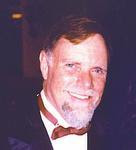I HAVE SEEN THE FUTURE proclaimed the small stickpin tin lapel buttons that were given out to patrons when they exited the General Motors Futurama pavilion at the 1939 World's Fair in New York City. Billing itself with the slogan, "The World of Tomorrow," the fair became a two-year celebration dedicated to the blessings of democracy and the wonders of technology, and it was this latter purpose, the apotheosis of technology, that captured the imagination of the fairgoers in a way unlikely to ever be seen again. During those two incredible years, sandwiched between a decade of economic hopelessness and the coming horror of the Second World War, it seemed for a brief moment that anything was possible. The automotive titans, Ford and General Motors competed for the attention, and even the affection, of fair attendees with two innovative exhibits that conveyed the idea of progress in two very different ways. Ford sought to highlight the paradigm shift that had already taken place by giving visitors a look back in time in the form of a floor show entitled "A Thousand Times Neigh," a horse's-eye view of the automobile. This offering from the Ford Motor Company, while entertaining and original, was completely upstaged by the Futurama of General Motors which had been designed by futurist, Norman Bel Geddes, to show the American landscape as it was predicted to look in the year 1960. Bel Geddes' vision of the future included 1,500-foot-high office buildings, 14-lane superhighways, and small individual vehicles capable of traveling by both roadway and air.
These components of future technology envisioned in Futurama by Norman Bel Geddes made their way onto a list of predictions that grew out of the 1939 World's Fair to tell the people of that time what they could expect to see in the next 25 years. The following is a collection of anticipated marvels prophesied in 1939 that were realistically expected to exist in the year 1964: buildings taller than the Empire State Building constructed with lavish use of aluminum and glass, a multi-lane highway system that would allow a driver to travel coast-to-coast without stopping for anything but food and gasoline, a personal vehicle capable of both air and ground travel, the cautious but feasible use of atomic energy for power production, ubiquitous plastics, television sets in every home supported by a broadcast infrastructure, nylon stockings for women, rockets capable of orbiting above earth's atmosphere, radio telephones for occasional use in automobiles, aircraft capable of carrying 200 passengers at 400 mph, antibiotics, warships an eighth of a mile long, prefabricated low-cost houses, and fresh fruits and vegetables available at any time of year.
All but one of these promised technological achievements were either fully realized by 1964 or were in development with their final actuality clearly in sight. Only the dual-use aircar remained elusive, and if one considers the technological problems associated with atomic energy and orbital rockets, it's hard to argue that the technology of air-ground functionality was simply too insurmountable. It's equally hard to make the case that the aircar concept didn't fully capture the imagination of the public sufficiently to spur development and production. The list was, after all, composed in 1939, and given the attention that the aircar concept had received in the years leading up to 1939, one might have anticipated that its development would have been among the first of the expectations to come true.
Subscribe to:
Post Comments (Atom)




No comments:
Post a Comment